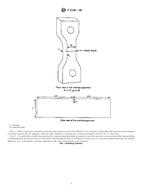We need your consent to use the individual data so that you can see information about your interests, among other things. Click "OK" to give your consent.
ASTM F2136-08
Standard Test Method for Notched, Constant Ligament-Stress (NCLS) Test to Determine Slow-Crack-Growth Resistance of HDPE Resins or HDPE Corrugated Pipe
STANDARD published on 1.11.2008
The information about the standard:
Designation standards: ASTM F2136-08
Note: WITHDRAWN
Publication date standards: 1.11.2008
SKU: NS-52949
The number of pages: 5
Approximate weight : 15 g (0.03 lbs)
Country: American technical standard
Category: Technical standards ASTM
Annotation of standard text ASTM F2136-08 :
Keywords:
constant ligament-stress, corrugated HDPE pipe, slow-crack-growth resistance, Constant ligament stress, Corrugated pipe, HDPE (high-density polyethylene), NCLS (notched constant ligament stress) test, Slow crack growth (SCG), ICS Number Code 19.060 (Mechanical testing), 83.140.01 (Rubber and plastic products in general)
Additional information
| Significance and Use | ||||||||||||||
|
This test method does not purport to interpret the data generated. This test method is intended to compare slow-crack-growth (SCG) resistance for a limited set of HDPE resins. This test method may be used on virgin HDPE resin compression-molded into a plaque or on extruded HDPE corrugated pipe that is chopped and compression-molded into a plaque (see 7.1.1 for details). |
||||||||||||||
| 1. Scope | ||||||||||||||
|
1.1 This test method is used to determine the susceptibility of high-density polyethylene (HDPE) resins or corrugated pipe to slow-crack-growth under a constant ligament-stress in an accelerating environment. This test method is intended to apply only to HDPE of a limited melt index and density range as defined in AASHTO Standard Specification M 294. This test method may be applicable for other materials, but data are not available for other materials at this time. 1.2 This test method measures the failure time associated with a given test specimen at a constant, specified, ligament-stress level. 1.3 The values stated in inch-pound units are to be regarded as standard. The values given in parentheses are mathematical conversions to SI units that are provided for information only and are not considered standard. 1.4 Definitions are in accordance with Terminology F 412, and abbreviations are in accordance with Terminology D 1600, unless otherwise specified. 1.5 This standard does not purport to address all of the safety concerns, if any, associated with its use. It is the responsibility of the user of this standard to establish appropriate safety and health practices and determine the applicability of regulatory limitations prior to use. |
||||||||||||||
| 2. Referenced Documents | ||||||||||||||
|
We recommend:
Technical standards updating
Do you want to make sure you use only the valid technical standards?
We can offer you a solution which will provide you a monthly overview concerning the updating of standards which you use.
Would you like to know more? Look at this page.




 Cookies
Cookies
